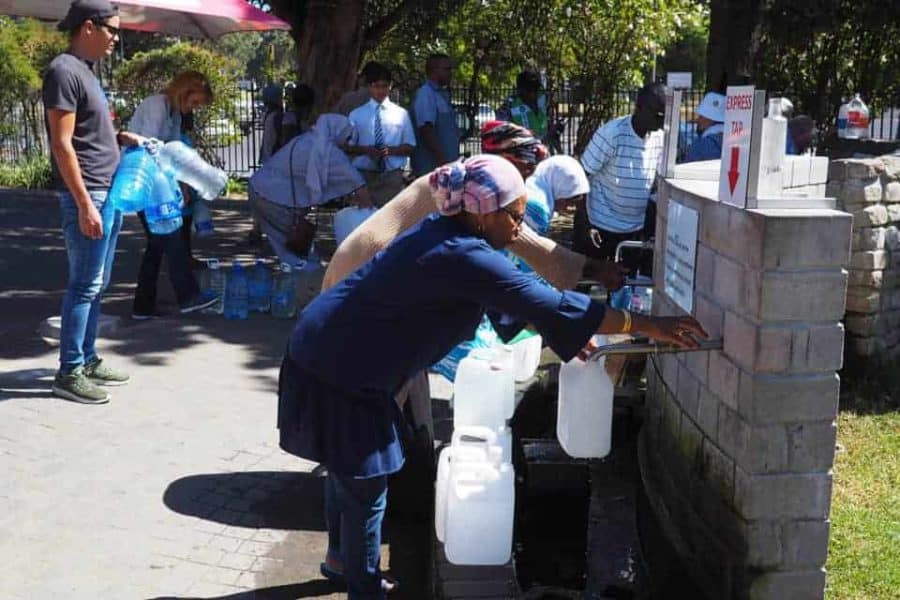Today, the lakes around Cape Town are brimming with water, but it was only a few years ago that South Africa’s second-most populous city made global headlines as a multi-year drought depleted its reservoirs, impacting millions of people. That kind of extreme event may become the norm, researchers now warn.
Using new high-resolution simulations, researchers from Stanford University and the National Oceanic and Atmospheric Administration (NOAA) concluded that human-caused climate change made the “Day Zero” drought in southwestern South Africa – named after the day, barely averted, when Cape Town’s municipal water supply would need to be shut off – five to six times more likely. Furthermore, such extreme events could go from being rare to common events by the end of the century, according to the study, published November 9 in the journal Proceedings of the National Academy of Sciences.
“In a way, the ‘Day Zero’ drought might have been a sort of taste of what the future may be,” said lead author Salvatore Pascale, a research scientist at Stanford’s School of Earth, Energy & Environmental Sciences (Stanford Earth). “In the worst-case scenario, events like the ‘Day Zero’ drought may become about 100 times more likely than what they were in the early 20th-century world.”
Factoring multiple climate scenarios
Using a climate modeling system known as the Seamless System for Prediction and EArth System Research (SPEAR), the researchers simulated the response of atmospheric circulation patterns to increasing levels of carbon dioxide.
The model found that in a high greenhouse gas-emissions scenario, a devastating drought like the one that crippled Cape Town could impact the region two or three times in a decade. Even in an intermediate-emissions scenario, the risk of multi-year droughts that are more extreme and last longer than the “Day Zero” drought will increase by the end of the century.
The new research uses higher resolution models than were previously available and supports the conclusions of past studies that projected an increase in drought risk. The findings underscore the area’s sensitivity to further emissions and need for aggressive water management.
“The information we can provide now with these new tools is much more precise,” Pascale said. “We can say with a higher degree of confidence that the role anthropogenic climate change has had so far has been quite large.”
Preparing for the future
Other parts of the world with similar climates to South Africa – including California, southern Australia, southern Europe and parts of South America – could experience their own Zero Day droughts in the future, according to the researchers. “Analysis like this should be conducted for thorough water risk management,” said co-author Sarah Kapnick, a research physical scientist and deputy division leader at NOAA’s Geophysical Fluid Dynamics Laboratory.
“Given the dramatic shift in multi-year drought risk, this work also serves as an example for other regions to explore their changing drought risks,” Kapnick said. “Emerging drought risks may not be on the radar of managers in other regions in the world who have not experienced a recent rare drought event.”
Meteorological droughts, or rainfall deficits, like the one that affected Cape Town have high societal and economic impacts. According to estimates, lower crop yields from the “Day Zero” drought caused an economic loss of about $400 million, in addition to tens of thousands of jobs.
“This study shows these events will be more likely in the future depending on how energetic we are in addressing the climate problem,” Pascale said. “It can be either catastrophic or just a little bit better, but still worse than what it is now – this is trying to give some indication about what the future might look like.”
Three consecutive years of dry winters from 2015-17 in southwestern South Africa led to the severe water shortage from 2017-18. Cape Town never actually reach “Day Zero,” in part because authorities implemented water restrictions throughout the period, banning outdoor and non-essential water use, encouraging toilet flushing with grey water and eventually limiting consumption to about 13 gallons per person in February 2018. That level of conservation was foreign to many residents of the coastal tourist destination and would likely be jarring to many in the U.S., where the average person goes through 80 to 100 gallons per day, according to the United States Geological Survey (USGS).
“I’m sure that many Cape Town residents have forgotten what happened now that lakes and water reservoirs are back to normal,” Pascale said. “But this is the moment to rethink the old way of managing water for a future when there will be less water available.”
Thomas Delworth and William Cooke from NOAA are co-authors on the study.
The research was supported by NOAA and Stanford.
To read all stories about Stanford science, subscribe to the biweekly Stanford Science Digest.
Media Contacts
Salvatore Pascale, School of Earth, Energy & Environmental Sciences: contact number: (650) 498-0049;
[email protected]
Danielle Torrent Tucker, School of Earth, Energy & Environmental Sciences: (650) 497-9541;
[email protected]


